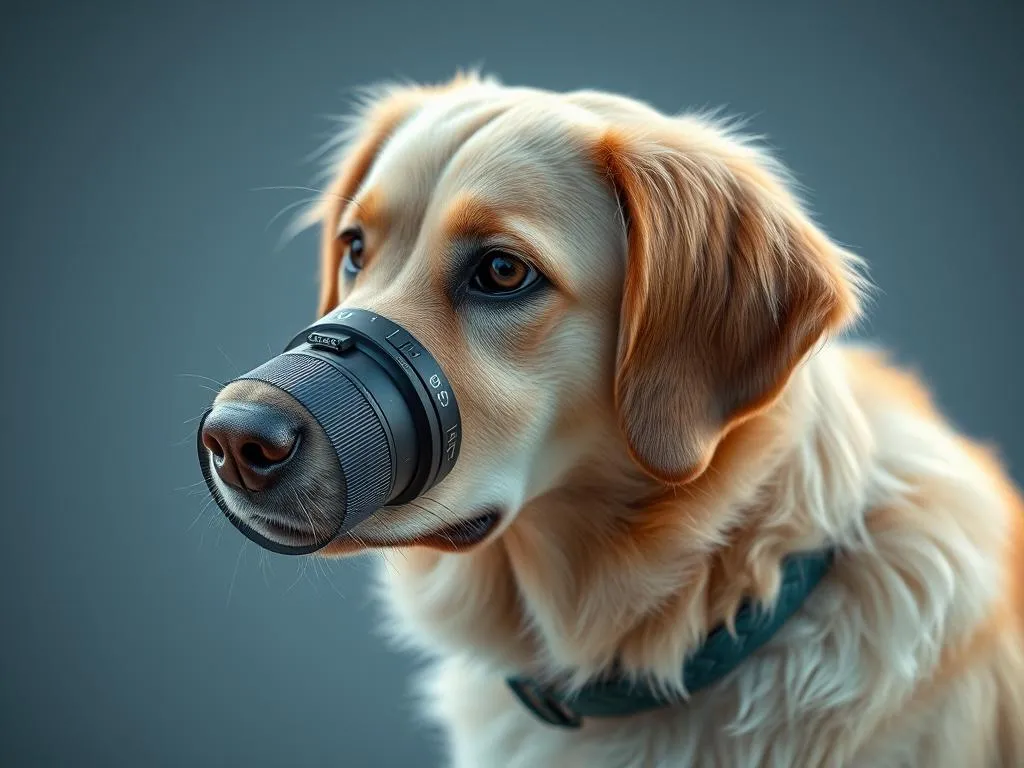
In today’s digital age, the relationship between dogs and technology is becoming more curious and complicated. From smartphones to smart devices, pets are interacting with technology in unexpected ways. One question that often arises among pet owners and enthusiasts is whether dogs can sense cameras. This question isn’t just about curiosity; it delves into how our furry friends perceive their environment and interact with the world around them, especially as we document their lives through photographs and videos.
Understanding whether dogs can sense cameras has implications for pet ownership, photography, and our interactions with pets. It can help us capture better moments with our canine companions while ensuring their comfort and enjoyment during these activities. This article will explore the intricate world of dog senses, their responses to modern technology, the mechanics of cameras, and practical tips for pet owners.
Understanding Dog Senses
Overview of Canine Senses
Dogs are equipped with an impressive array of senses that allow them to navigate their surroundings. While humans rely heavily on vision, dogs utilize a combination of smell, sight, hearing, and touch to perceive their environment.
-
Smell: Dogs have an extraordinary sense of smell, estimated to be anywhere from 10,000 to 100,000 times more sensitive than humans. This ability plays a critical role in how they interact with the world, often relying on scent to gather information about their environment and other animals.
-
Sight: Dogs possess dichromatic vision, meaning they see two primary colors (blue and yellow) but have limited ability to perceive reds and greens. Their vision is also optimized for low-light conditions, allowing them to see better in the dark than humans can.
-
Hearing: Dogs have a remarkable ability to hear sounds at much higher frequencies than humans, making their auditory perception another vital sense for communication and interaction.
-
Touch: Dogs are sensitive to touch, using this sense to communicate and bond with their owners.
The Role of Vision in Dogs
While dogs have developed excellent senses of smell and hearing, their vision plays a significant role in how they perceive their environment. Dogs are particularly attuned to motion; they can detect movement better than still images. However, their color vision is limited compared to humans, as they cannot distinguish between certain colors, which may affect their perception of visual stimuli like photographs.
Dogs also have a different focal range than humans, which means they tend to see things more clearly at a distance rather than up close. Understanding these differences is essential when considering whether dogs can sense cameras.
Dogs and Technology
Dogs’ Response to Modern Devices
As technology becomes a part of daily life, many dog owners have observed their pets’ reactions to various devices. Dogs often show curiosity or confusion when encountering unfamiliar technology, such as smartphones, tablets, or televisions. They may bark at the sound of notifications, tilt their heads at video calls, or even respond to their reflection on screens.
The Effect of Screens on Dogs
Research and anecdotal evidence suggest that dogs can perceive images on screens, though their understanding differs from humans. Dogs may respond to moving images, which can capture their attention, especially if the images depict animals or objects that excite them. The concept of motion detection is crucial here; dogs are more likely to react to something that moves than to static images.
Can Dogs Sense Cameras?
Understanding Camera Mechanics
To appreciate whether dogs can sense cameras, it’s useful to understand how cameras work. Cameras capture images by focusing light onto a sensor or film, which records the visual information. This process occurs quickly, whether it’s still photography or video. The presence of a camera can create different perceptions for dogs, especially depending on whether it’s taking a still image or recording video.
Dogs’ Perception of Cameras
Studies exploring dogs’ reactions to cameras are limited, but observations suggest that dogs may become aware of the presence of a camera. Behavioral signs indicating awareness include:
-
Looking directly at the camera: Dogs may instinctively turn towards the camera, as they are naturally drawn to movement.
-
Posing: Some dogs seem to understand when they are being photographed and may adopt a particular stance or expression, possibly due to conditioning or learned behavior from past experiences.
-
Curiosity or Wariness: Dogs might approach or back away from the camera based on their experiences or the environment they are in.
Anecdotal Evidence and Case Studies
Many pet owners have shared their experiences of how their dogs react to being filmed or photographed. Some dogs seem to enjoy the attention, while others may appear confused or anxious. For instance, a Labrador retriever may eagerly pose for pictures, wagging its tail and looking directly into the lens, while a more reserved breed, like a Shiba Inu, might turn away or hide when a camera is pointed at them.
Interviews with trainers and veterinarians have shown mixed reactions, with some professionals advocating for positive reinforcement to encourage comfortable behavior around cameras.
Factors Influencing Dogs’ Awareness of Cameras
Environmental Context
The environment plays a significant role in how dogs react to cameras. In familiar settings, dogs may feel more at ease and confident, which could lead to more relaxed and natural behaviors during photo sessions. Conversely, in unfamiliar environments, dogs may become more cautious or anxious, potentially leading to negative reactions to the camera.
Training and Socialization
A dog’s training and socialization also influence its response to cameras. Dogs that are accustomed to being photographed or filmed may learn to associate cameras with positive experiences, such as treats or playtime. Positive reinforcement can help dogs develop a more relaxed attitude towards cameras, making photography sessions enjoyable for both the dog and the owner.
Breed Differences
Certain dog breeds may have distinct tendencies when it comes to sensing cameras. Breeds that are more alert and aware, such as Border Collies or German Shepherds, may be more likely to notice and respond to the presence of a camera compared to more laid-back breeds, like Bulldogs. Understanding these breed-specific behaviors can guide pet owners in managing their dogs’ reactions during photography sessions.
Practical Tips for Pet Owners
Capturing Better Photos of Your Dog
To ensure a positive experience for your dog while capturing those memorable moments, consider the following tips:
-
Use Natural Light: Whenever possible, shoot in natural light to create a more relaxed atmosphere. Early morning or late afternoon light is often the most flattering.
-
Get Down to Their Level: Taking photos at your dog’s eye level can create more intimate and engaging images.
-
Be Patient: Allow your dog time to adjust to the camera. Rushing can lead to stress.
-
Use Toys or Treats: To encourage your dog to look at the camera, use toys or treats to capture their attention.
Using Technology to Enhance Dog Interaction
Many apps and tools can help engage dogs during photography sessions. For example, some apps emit sounds or vibrations that can attract your dog’s attention. Additionally, using interactive toys can create a fun atmosphere, ensuring your dog feels relaxed and happy while being photographed.
Understanding Your Dog’s Comfort Level
Observing your dog’s behavior around cameras is essential. Signs of stress or discomfort may include:
-
Turning away: If your dog consistently turns its head away from the camera, it may indicate unease.
-
Barking or growling: These vocalizations can signal anxiety or fear.
-
Avoidance behavior: Hiding or retreating can suggest that your dog is not comfortable with the situation.
By recognizing these signs, you can adjust your approach to make the experience more enjoyable for your dog.
Conclusion
The exploration of whether dogs can sense cameras reveals a fascinating interplay between canine perception and technology. Understanding dog senses, their reactions to modern devices, and the environmental and behavioral factors that influence their responses can significantly enhance how we interact with our pets during photography sessions. By creating a comfortable and engaging atmosphere, pet owners can capture beautiful moments while ensuring their dogs feel at ease. This understanding not only benefits photography but also fosters a deeper bond between dogs and their owners in our technology-driven world.









